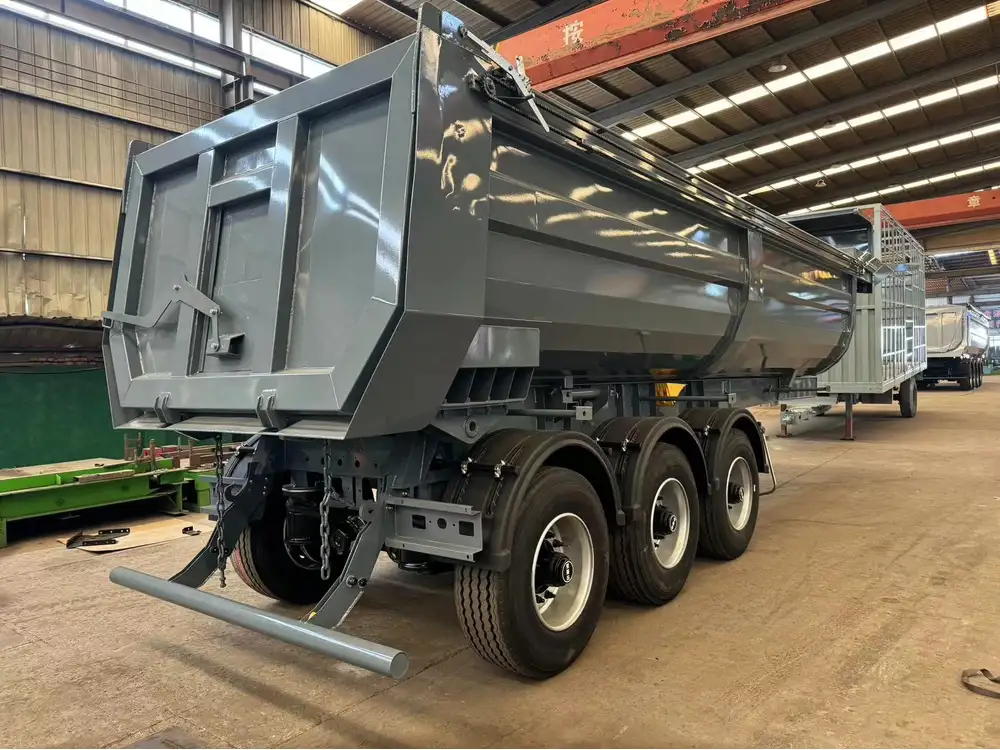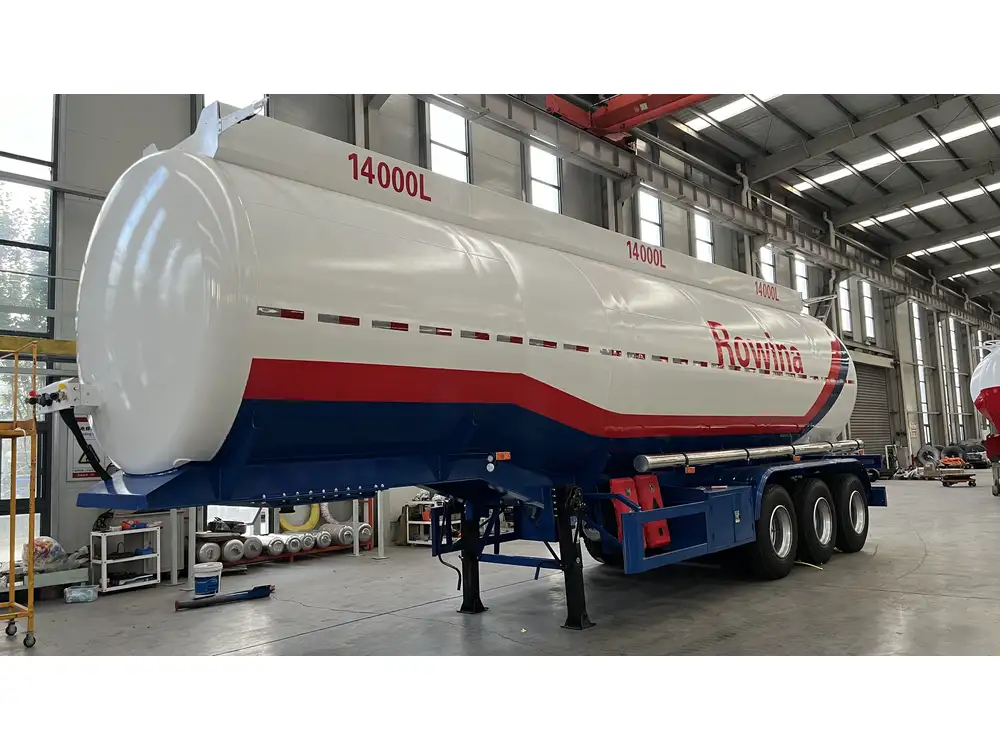When it comes to transporting motorcycles, safety and precision are paramount. Hauling a motorcycle on a flatbed trailer doesn’t just require a solid understanding of your equipment; it mandates a meticulous approach to ensure your prized possession arrives safely at its destination. In this comprehensive guide, we will dive deep into the various aspects of hauling a motorcycle effectively, covering everything from preparing your equipment to advanced loading techniques, thereby optimizing your experience and ensuring vehicular integrity.
Understanding Your Flatbed Trailer
Before delving into the process of loading and securing your motorcycle, it’s crucial to understand the type of flatbed trailer you are using. These trailers come in various shapes and sizes, and selecting the right one is imperative. The following table outlines key specifications and features to consider:
| Trailer Type | Capacity (lbs) | Dimensions (L x W) | Best Uses |
|---|---|---|---|
| Standard Flatbed Trailer | 3,000 – 7,000 | 12’ x 6’ | General transport of bikes |
| Low-Bed Flatbed Trailer | 5,000 – 10,000 | 20’ x 8’ | Hauling heavy motorcycles |
| Enclosed Flatbed Trailer | 3,500 – 8,500 | 14’ x 7’ | Weather protection and security |
| Car Hauler Trailer | 2,500 – 9,000 | 16’ x 7’ | Specific for motorcycles and cars |
Load Capacity and Stability
The load capacity of the flatbed trailer is essential for safe transport. Verify that the combined weight of your motorcycle and any gear does not exceed the trailer’s capacity. Stability during transport is further ensured by selecting a flatbed designed to distribute weight evenly.

Preparing Your Motorcycle for Hauling
Prior to loading your motorcycle onto the flatbed trailer, thorough preparation is essential:
Inspect the Motorcycle:
- Verify that the tires are properly inflated and in good condition.
- Ensure all fluids (oil, fuel, etc.) are adequately filled but not overflowing.
Remove Loose Items:
- Take off any non-essential accessories that could become loose during transport, such as saddlebags or GPS units.
Check Security Features:
- Ensure the motorcycle’s kickstand is functional and can support the bike’s weight when loading.
Loading Techniques: Step-by-Step
Essential Equipment for Loading
- Loading Ramp: A sturdy ramp is essential for smoothly moving your motorcycle onto the trailer.
- Straps and Tie-Downs: Use high-quality ratchet straps to secure your motorcycle.
- Personal Protective Equipment (PPE): Gloves and closed-toe shoes will protect against injuries during loading.

Step 1: Position the Trailer
Ensure the flatbed trailer is parked on a level surface. A stable base is critical for loading. If necessary, use wheel chocks to prevent rolling.
Step 2: Align the Ramp
Set up the loading ramp:
- Position the ramp at a level angle to the flatbed, ensuring it’s secure and won’t slip during the loading process.
Test the Ramp’s Stability:
- Before loading the motorcycle, test the ramp by applying pressure to ensure it is secure.
Step 3: Load the Motorcycle
Ascend Slowly:
- Sit on the motorcycle and gently ride it up the ramp while maintaining balance and control. Keep your speed slow to prevent mishaps.
Use a Partner:
- If possible, have someone guide you from the trailer side to help direct the bike and provide assistance if needed.

Step 4: Securing the Motorcycle
Once the motorcycle is on the flatbed, it is vital to secure it properly:
Positioning the Bike:
- Center the motorcycle on the trailer for balanced weight distribution.
Using Ratchet Straps:
- Attach ratchet straps to both the front and rear of the motorcycle. Here’s a structured approach:
- Front Tie-Downs:
- Attach to solid points on the fork or handlebars, pulling the motorcycle forward slightly to compress the suspension.
- Rear Tie-Downs:
- Use the subframe or swingarm as attachment points and ensure that they are tight but not overly restrictive.
Securing the Load: Key Considerations
| Aspect | Importance | Best Practices |
|---|---|---|
| Tension in Straps | Prevents shifting during transport | Use a ratchet mechanism for optimal tension |
| Vertical and Horizontal Stability | Reduces the risk of tipping | Ensure motorcycle stands upright, with weight evenly distributed |
| Regular Inspections | Safety during transit | Check straps periodically, especially on long hauls |
Driving and Transportation Tips

Before You Hit the Road
Test the Security:
- Firmly shake the motorcycle to ensure it’s secured and won’t move during transit.
Check Visibility:
- Ensure that your cargo doesn’t obstruct your vehicle’s lights or license plate.
Regulatory Compliance:
- Be aware of local laws regarding transporting vehicles. Some jurisdictions have specific rules regarding trailer widths and load safety.
Driving Precautions
Go Slow:
- During transport, especially around curves and corners, slow down to maintain control and prevent shifting.
Avoid Overloading:
- Don’t compromise by hauling too much; if necessary, make multiple trips.
Watch for Altitude Changes:
- Be cautious of steep inclines or declines; adjust your speed accordingly.
Unloading Your Motorcycle Safely

Step 1: Prepare Your Surroundings
Find a Level Area:
- Park the trailer on level ground to facilitate a straightforward unloading process.
Clear Obstacles:
- Ensure the area around the trailer is free of obstacles that might hinder the unloading.
Step 2: Unstrap the Motorcycle
Loosen Straps:
- Carefully loosen the straps while checking to ensure no tensions are transferred to the bike.
Stabilize the Motorcycle:
- Maintain balance as you remove each strap to prevent it from tipping over.
Step 3: Descend the Ramp
Ride Down Slowly:
- Control the descent by keeping your throttle low and using the brakes to moderate speed.
Use a Spotter:
- Have someone assist in guiding you down if necessary, especially if the ramp is particularly steep or narrow.

Troubleshooting Common Issues
| Issue | Potential Causes | Solutions |
|---|---|---|
| Motorcycle moves during transport | Inadequate strapping or securing | Reassess strapping technique, add extra straps |
| Large motorcycle is hard to load | Too steep ramp angle | Assess ramp angle, or switch to a more gradual ramp |
| Straps are loosening during transport | Insufficient tension or wear | Use better straps or tensioning tools |
Conclusion: Ensuring Safe and Efficient Transport
Hauling a motorcycle on a flatbed trailer is a responsible endeavor that necessitates precise techniques, quality equipment, and attention to detail. By adhering to the steps outlined above, manufacturers, dealers, and motorcycle enthusiasts alike can ensure that their motorcycles are transported safely and securely.
Whether you’re moving a precious classic bike, a high-performance machine, or a rugged off-road companion, employing the right strategies will safeguard your investment and facilitate smooth transportation experiences.
Additional Resources
- Motorcycle Safety Foundation (MSF) Guidelines: Review best practices for motorcycle handling and transport.
- Trailer Safety Inspections: Regular maintenance tips to ensure your flatbed trailer is up to standard.
Investing time into understanding how to effectively and securely haul a motorcycle will not only protect your bike but also provide peace of mind during transport. Follow this guide strictly, and rest assured that your motorcycle is in capable hands.



